
Bishop Bill Gafkjen serves as Chair of the ELCA Conference of Bishops and Bishop of the Indiana-Kentucky Synod of the ELCA.
Racism—a mix of power, privilege, and prejudice—is sin, a violation of God’s intention for humanity. The resulting racial, ethnic, or cultural barriers deny the truth that all people are God’s creatures and, therefore, persons of dignity. Racism fractures and fragments both church and society. [The ELCA’s social statement, Freed in Christ: Race, Ethnicity and Culture][i]
In late July, I was honored and blessed to participate in a joint gathering of the African-Descent Lutheran Association (ELCA) and the Union of Black Episcopalians in Philadelphia. Over meals, in the hallways, and in plenary sessions I was able to listen deeply to the concerns of people of color, especially people of African descent, who are part of the church. I was honored to sit for part of an afternoon with ELCA rostered ministers of African descent and heard stories of painful experiences of marginalization, disrespect, and discrimination in our life together as the ELCA. During the opening worship service, I was invited to bring a greeting on behalf of the I-K Synod and, as its chair, the ELCA Conference of Bishops. In that greeting I thanked these dear sisters and brothers for their partnership in the gospel and for their persistent prophetic witness to the kind of beloved community Christ has made us to be and to how very far we still have to go in realizing that community.
On the flight home, I committed to three things: (1) engage the difficult process of facing and repenting of the ways in which I am complicit in, even a perpetrator of, racism; (2) do what I can in my various leadership roles in the church and as a citizen of this country to surface, challenge, and do something about systemic/institutional racism; and (3) share this with you, the good people of the I-K Synod, in this newsletter and invite you to join me on this journey.
And then Charlottesville happened. There, again, tragically, starkly, we saw the truth of what we said together in a social statement almost 25 years ago: Racism is sin and it fractures and fragments both church and society. Racism robs people of their God-given dignity. It privileges some at the expense of many. Racism kills. And, as a church and for so many of us as individuals, including me, we have done very little to challenge and change this great evil.
Did you know that the Southern Poverty Law Center – a well-respected group committed to identifying hate, combating intolerance, and dismantling racism – has identified 26 hate groups in Indiana and 23 in Kentucky? Most of them are white supremacist/nationalist groups of the ilk that were part of the troubles in Charlottesville.[ii] Somehow, we need to present a counter-witness to these groups, many of whom try to claim the name of Jesus. We need to step up our presence in the public arena – much like those from the ELCA and others who went to Charlottesville – to work toward a community that honors all, welcomes all, receives the gifts of all, and makes space for all, for every single one, to walk alongside others toward a beautiful future where we actually embody the community Christ has made us to be.
Of course, hate groups are the obvious ones to combat. As individuals, as local congregations, as a synod, as a church, we have a great deal of perhaps less immediately obvious need for self-reflection, confession, repentance, and change to engage ourselves…even and especially for things that are just so much part of the dominant local or broader culture or way of doing things that we don’t even see how they hurt, exclude, and denigrate people of races, ethnicities, and self-identities different from our own. This may be the most challenging and difficult work of all. But, for the sake of our sisters and brothers, for Jesus’ sake, we just have to do it. The love of Christ compels us. “All this is from God, who reconciled us to himself through Christ, and has given us the ministry of reconciliation” [2 Corinthians 5:18].
We will be working on these things synodically this fall. I hope that as the fall school year/program year begins, you will join me in finding ways to face and resist racism and its shadowy siblings. Together, we seek to not be conformed to this world, but transformed by the renewing of our minds, our inmost beings, in the power of the Spirit (Romans 12:1), in families, in congregations, and in our communities.
This will not be easy, sisters and brothers. But, thanks be to God, this hard and necessary work is bathed in promise, for “those who want to save their life will lose it, and those who lose their life for my sake will find it” [Jesus, Matthew 16:25].
Peace be with you,
Bishop Bill Gafkjen
[i] Download a PDF here: http://ow.ly/YEEn30ep7r5
[ii] https://www.splcenter.org/hate-map
A prayer written by Bishop Gafkjen the weekend of the events in Charlottesville can be found here: http://livingcommunion.blogspot.com/
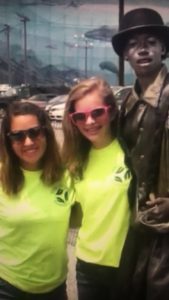 Hi, I’m Zoe and I’m 19 years old. I had the opportunity to go to two Gatherings and I am so excited to share a little bit about how the Gathering changed young adult life.
Hi, I’m Zoe and I’m 19 years old. I had the opportunity to go to two Gatherings and I am so excited to share a little bit about how the Gathering changed young adult life.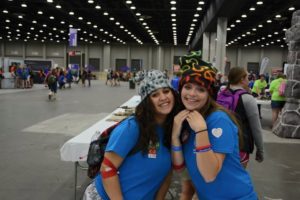 In Detroit, I was one of the oldest participants. I had a little bit more knowledge going into the event. Because of that, I felt that it was important make the Gathering an inspirational experience for others since I had already had the experience for myself. I reached out to leaders in my community. I was lucky enough to assist in leading Synod Day, where I found myself in a role that made the Gathering so different from the one I attended before.
In Detroit, I was one of the oldest participants. I had a little bit more knowledge going into the event. Because of that, I felt that it was important make the Gathering an inspirational experience for others since I had already had the experience for myself. I reached out to leaders in my community. I was lucky enough to assist in leading Synod Day, where I found myself in a role that made the Gathering so different from the one I attended before.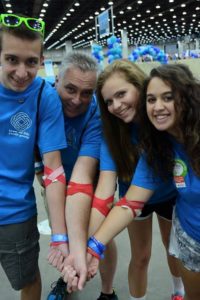 When I first heard, “Why the Gathering?” my answer immediately was, “Why not?” That’s not really an answer, considering that it gives zero insight.
When I first heard, “Why the Gathering?” my answer immediately was, “Why not?” That’s not really an answer, considering that it gives zero insight.

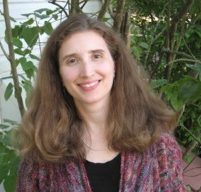

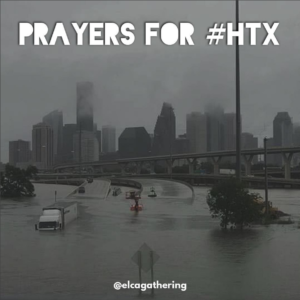
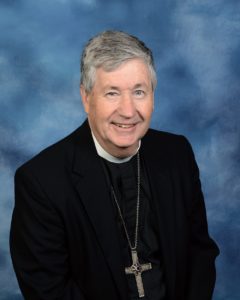
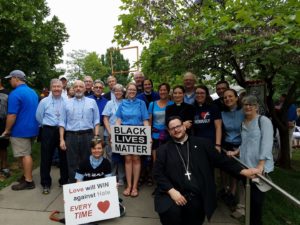
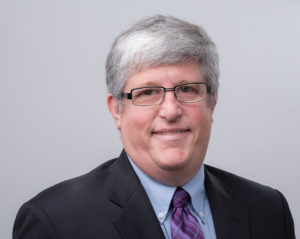
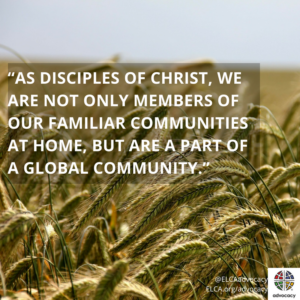

 We regularly ask ourselves this question at the congregation I serve. We have families and children in our congregation, but spread across our three worship services, and given our demographic in a Florida coastal retirement town we never know if we might have two kids (“kids” used broadly here, one might be a toddler and one a teenager) or ten at a worship service.
We regularly ask ourselves this question at the congregation I serve. We have families and children in our congregation, but spread across our three worship services, and given our demographic in a Florida coastal retirement town we never know if we might have two kids (“kids” used broadly here, one might be a toddler and one a teenager) or ten at a worship service.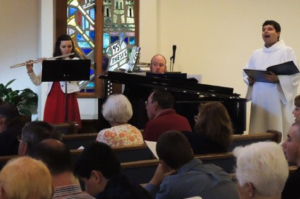 talented high school instrumentalists to an eight-year-old playing the rain stick), or worship leaders. It is definitely harder work to get youth to commit versus an adult. We have more issues with no shows than we do with adults, but it is worth it. The more we ask our young people to participate in the regular roles in worship the more they feel worship is for them.
talented high school instrumentalists to an eight-year-old playing the rain stick), or worship leaders. It is definitely harder work to get youth to commit versus an adult. We have more issues with no shows than we do with adults, but it is worth it. The more we ask our young people to participate in the regular roles in worship the more they feel worship is for them.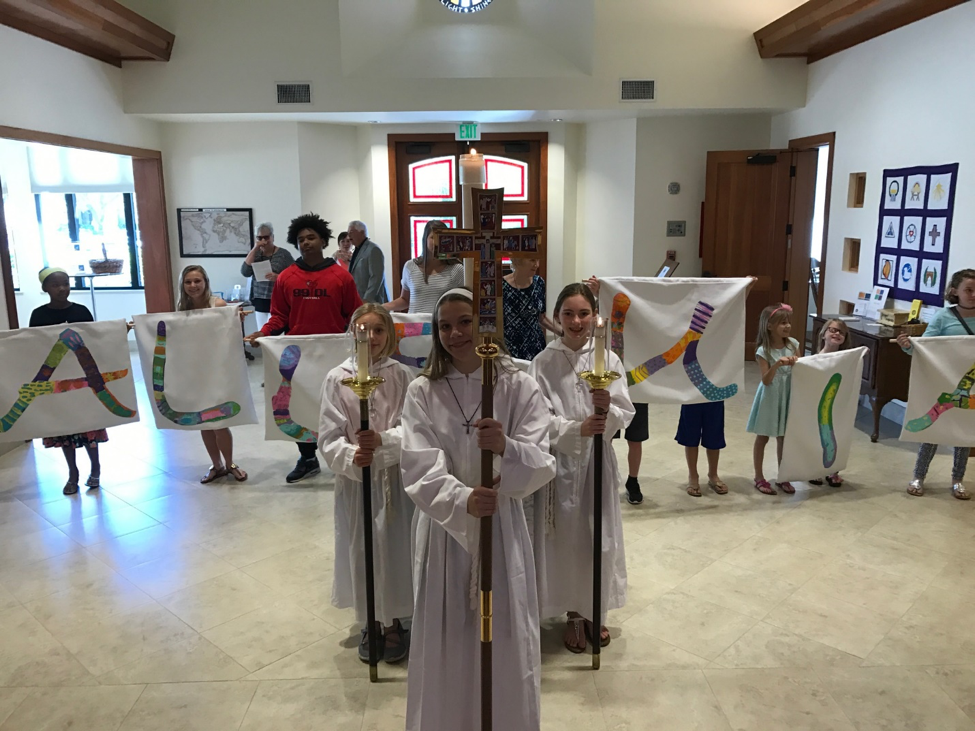 So if you are like us and you may only have a smattering of children in worship, don’t be discouraged. Wear yourself out to include them. It will be worth the effort. To them and the congregation, their presence will feel larger than the actual numbers. Hear it in the voices of children: “Go in Peace. Serve the Lord!”
So if you are like us and you may only have a smattering of children in worship, don’t be discouraged. Wear yourself out to include them. It will be worth the effort. To them and the congregation, their presence will feel larger than the actual numbers. Hear it in the voices of children: “Go in Peace. Serve the Lord!”